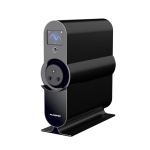Enhanced Phospholipid Isomer Analysis by Online Photochemical Derivatization and RPLC-MS
Mapping the complete molecular composition of a lipidome is considered an important goal of lipidomics for unraveling pathways and mechanisms behind lipid homeostasis. Conventional dissociation methods of mass spectrometry (MS) usually cannot give detailed structural information on lipids such as locations of carbon–carbon double bonds (C═C) in acyl chains. Double-bond derivatization via the Paternò–Büchi (PB) reaction has been demonstrated as a simple and highly efficient method for identification of C═C locations of different classes of lipids when paired with tandem mass spectrometry (MS/MS). In this work, reversed-phase lipid chromatography (RPLC)-MS was coupled with an online PB reaction to achieve enhanced analysis of isomers and isobars of phospholipids. A new acetone-containing mobile phase was developed that showed good elution performance for the separation of phospholipids by C18 columns. An improved flow microreactor was developed, enabling online derivatization of phospholipid C═C in 20 s. The workflow of RPLC-PB-MS/MS was developed and optimized for identification of C═C locations in isobaric ether-linked and diacyl phospholipids, 13C isobars, and acyl chain isomers in biological lipid extracts. Separation and identification of C═C locations of cis/trans phospholipid isomers were achieved for lipid standards. The incorporation of the PB reaction into the RPLC-MS workflow enabled analysis of phospholipid isomers and isobars with high confidence, demonstrating its potential for high-throughput phospholipid identification from complex mixtures.

- This study presents an online photochemical derivatization coupled with reversed-phase liquid chromatography-mass spectrometry (RPLC-MS) for enhanced phospholipid isomer and isobar analysis.
- A novel acetone-containing mobile phase was developed for RPLC, achieving good separation of phospholipid isomers/isobars (e.g., diacyl vs. ether phospholipids, ¹³C isotopes, and acyl chain variants) while maintaining compatibility with PB derivatization.
- The method also resolved phospholipid cis/trans C=C isomers through RPLC retention time differences.
- In comparison with previously reported hydrophilic interaction chromatography-based systems, the RPLC-PB-MS/MS provides higher confidence for identification of phospholipids resulting from its separation capability.
Anal Chem. 2020 May 5;92(9):6719-6726. (IF: 6.7)


